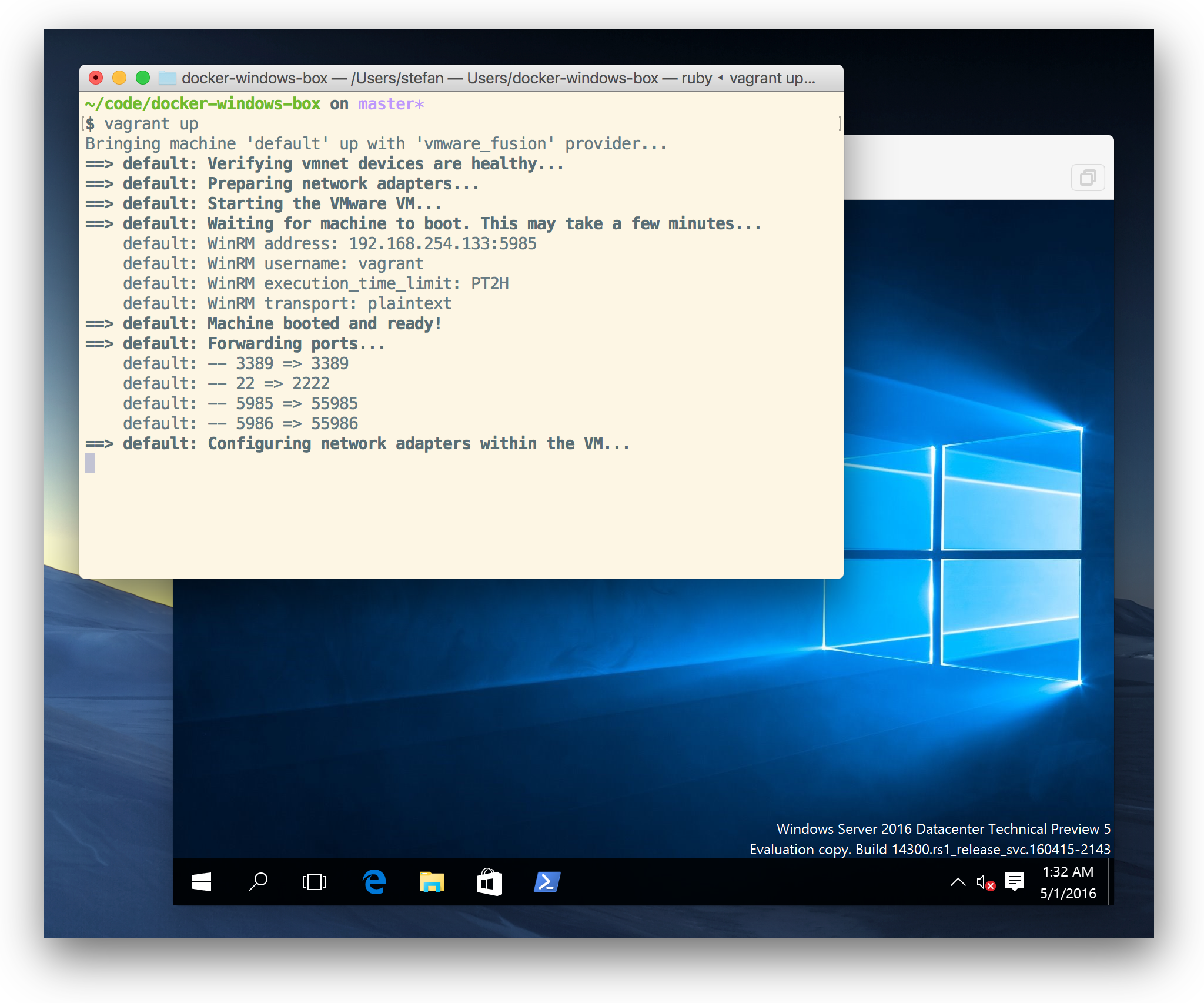
- Vagrant windows install#
- Vagrant windows portable#
- Vagrant windows code#
- Vagrant windows password#
- Vagrant windows download#
Vagrant is a server that runs under VirtualBox. In this tutorial, we will be installing Vagrant, a bare bones server with Ubuntu installed. You can learn more on Drupal development in our upcoming book co-authored by team at Valuebound.Before starting this tutorial, be sure to read this article: Introduction to Vagrant Go ahead and type the domain name - v in your browser to access it. With this we are done with configuring a VM on our system. We have just completed configuring a VM on our computer.

If you do not remember it now, you can find it by opening config.yaml using a text editor. The config.yaml file is located inside your puphpet folder, which you placed inside your VM folder earlier. The IP address was chosen while creating our VM config file on PuPHPet. Accordingly add this line to the host file: 192.168.56.101 v You can use anything as ‘v’ as my domain name. Go ahead and select a domain name for your Drupal project. Go to C:\windows\system32\drivers\etc\hosts and make changes to the host file using an editor with administrative privileges. To create virtual hosts, we need to make changes to the host files on our system. Further you can do a vagrant -v to check the version of vagrant installed. Once this is done just type vagrant in your command prompt. This would set up vagrant on your system and is expect to take a while. When you are inside this enter the following command in your command prompt. Once this is done, run your command prompt with admin privileges and point to the location of the folder with the ‘vagrantfile’. In our case, we would extract the folder in C:/drupalvm created in step 1.
Vagrant windows download#
Once your download is complete, extract the folder to the location where you intend to setup your VM. With this you are done with creating a customized VM using PuPHPet. Go ahead and download the zipped folder by clicking ‘Download your custom.’. Next you should see a screen with the option to download the your customized archive. Further you can leave the configurations as they are for the next few steps.
Vagrant windows password#
Further you can change the username and password if required. You can configure MySQL as per your need. Go ahead and uncheck MariaDB to set up MySQL for the VM.

Vagrant windows install#
Next we need to download and install the latest version of VirtualBox for Windows from. In Windows, we can create a new folder in ‘C’ drive and name it ‘drupalvm’.

Create a folder where you decide to store your VM. This location is regardless of where you save your VM configuration and files. Creating a locationĬhoose a directory where you would like your VM to be saved. To install Vagrant, you need to download the appropriate version of Vagrant and VirtualBox packages. Installing Vagrant on Windows environment is a multi-step process.
Vagrant windows code#
PuPHPet allows you to generate a package that contains all the needed code to create a virtual machine exactly as you decide on PuPHPet’s website. The file required to have a Vagrant machine i.e the Vagrantfile is written in Ruby, so if you are unfamiliar with it, using Vagrant can be a bit tricky. It allows developers to build the virtualized environment once and keep sharing it for every case.
Vagrant windows portable#
Vagrant provides easy to configure, reproducible, and portable work environments built to improve productivity.


 0 kommentar(er)
0 kommentar(er)
